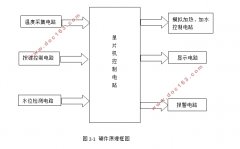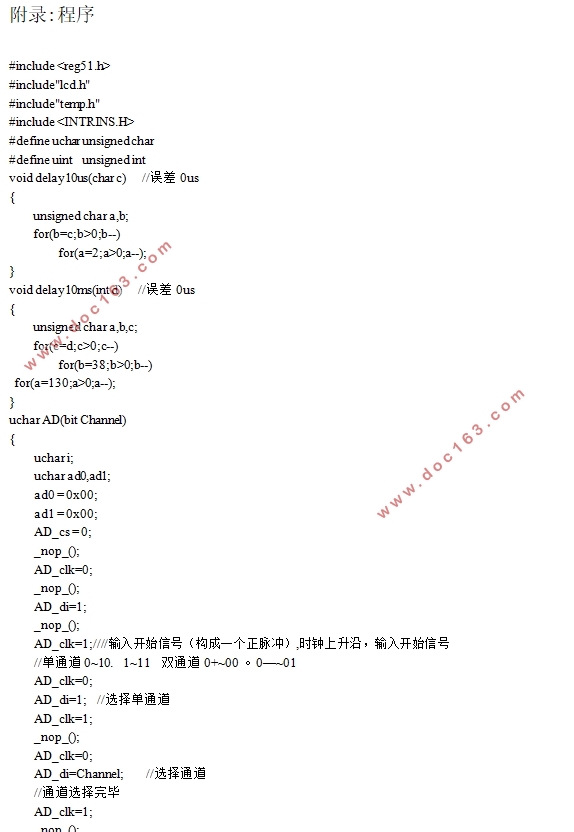太阳能热水器控制器的设计

1.无需注册登录,支付后按照提示操作即可获取该资料.
2.资料以网页介绍的为准,下载后不会有水印.资料仅供学习参考之用.
密 惠 保
太阳能热水器控制器的设计(论文10000字)
摘要
本次毕业设计主要研究的课题是太阳能热水器控制器的设计,主要要实现的功能是能够实现水位和水温测量,并实现热水器自动与手动加热和上水。相比于普通热水器单一的加热方式,该设计体现出的主要不同与优点就是当太阳能加热不足时能够提供备用的加热方式,从而实现更加智能化的控制。太阳能热水器控制器的设计案列也有不少,也是各有各的特点和想法。而本次设计采用了以51单片机作为核心的智能控制系统,通过显示屏来展示相关的水位和水温信息、温度和水位传感器用来实现基本的水位和水温的检测功能。本设计最终要达成的目标:显示水位和水温的信息;能够设置水位水温的上下限;完成自动的加热和加水功能;在太阳能不足以提供系统加热时将会启用备用的加热方式以确保水温能加热到预定的温度。
关键词:智能化控制模块 单片机控制系统 数字化温度传感器 辅助加热
Design of solar water heater controller
Abstract
The main subject of this design is the design of a solar water heater controller, the main goal is to be able to achieve the water level and temperature measurements, and to achieve automatic and manual water heaters heat and water. Compared with ordinary water heater single heating mode, the design reflects the main advantage is that unlike when there is insufficient solar heating can provide alternate heating methods, enabling more intelligent control. Solar water heater controller design there are many, the design uses a microcontroller as the control module 51 of the central processor design with a display, temperature and water level sensor to achieve the functions of each part. The ultimate goal of the design to be achieved: water level and water temperature information display; can set upper and lower water level and temperature; complete automatic function of heat and water; when insufficient solar backup heating mode can be enabled.
Key worlds: controller;sensor;temperature;solar heating


目录
摘要 I
Abstract II
第一章 绪论 1
1.1太阳能热水器控制器的近况和发展方向 1
1.2太阳能热水器控制器的设计意义和实际价值 1
第二章 系统设计思路及方案 3
2.1 系统设计要求 3
2.2 系统设计思路 3
2.3系统的要求和整体方案 3
2.2.1系统总体方案 3
2.2.2 运用到的主要技术 4
2.2.3 系统框图 4 [资料来源:www.THINK58.com]
第三章 单元电路设计 6
3.1单片机控制电路的设计 6
3.2显示电路的设计 7
3.3报警电路的设计 7
3.4温度采集电路的设计 8
3.5水位检测电路的设计 9
3.6按键电路的设计 10
3.7模拟加温加水电路的设计 11
3.8总电路 12
第四章 软件的设计 13
4.1软件设计分析 13
4.2软件程序设计要求 13
4.3主程序设计 13
4.4子程序设计 15
第五章 系统仿真和硬件调试 17
5.1 软件调试 17
5.1.1 Proteus仿真 17
5.1.2 仿真结果分析: 17
5.1.2 软件调试过程 20
5.2硬件调试 20
5.2.1调试步骤 20
5.2.2温度采集模块的检测调试 21
5.3硬件调试和展示过程 21
[资料来源:THINK58.com]
5.4 结果分析和总结 29
总结 31
参考文献 33 [资料来源:http://think58.com]
